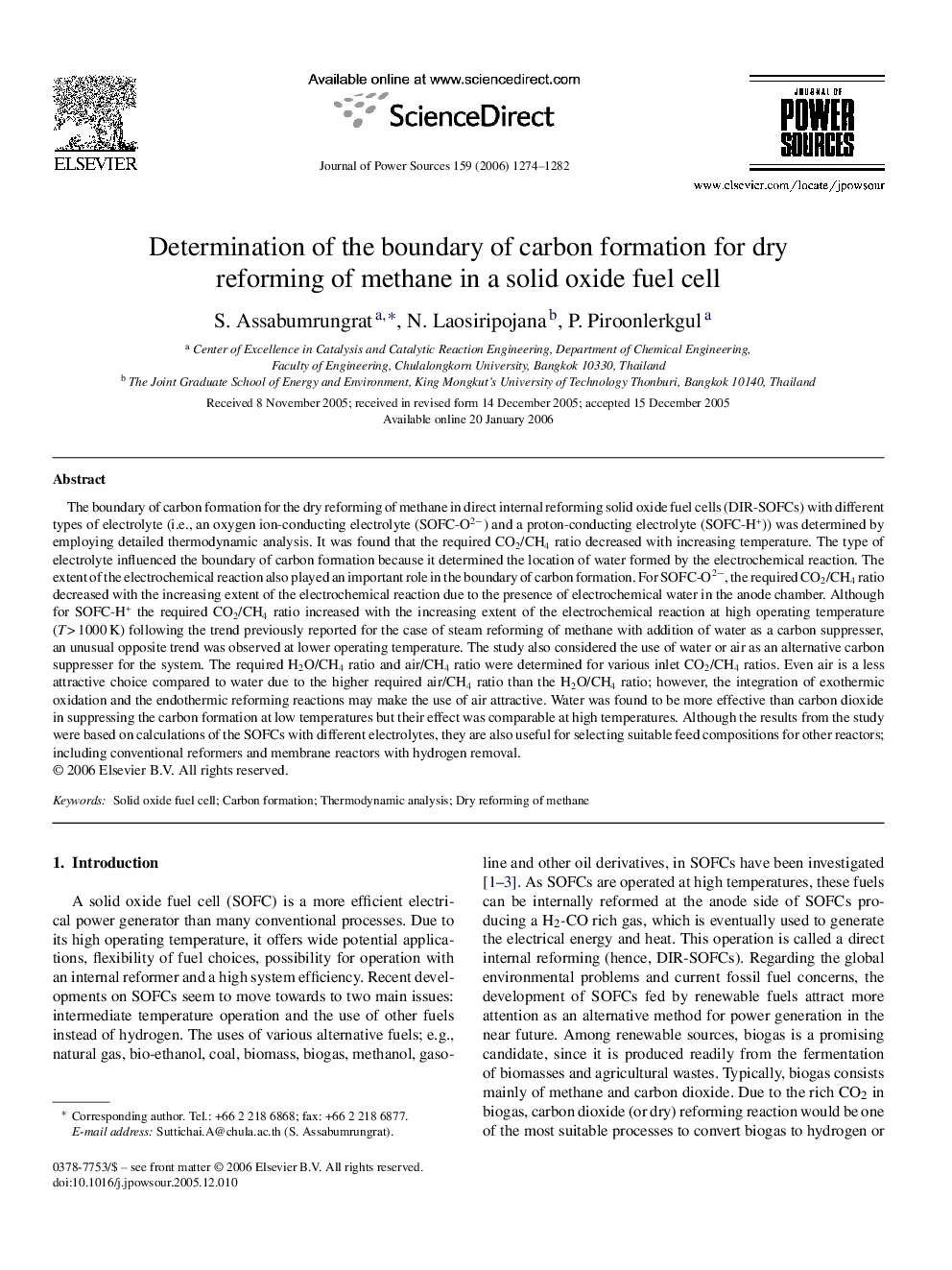| کد مقاله | کد نشریه | سال انتشار | مقاله انگلیسی | نسخه تمام متن |
|---|---|---|---|---|
| 1287284 | 973218 | 2006 | 9 صفحه PDF | دانلود رایگان |

The boundary of carbon formation for the dry reforming of methane in direct internal reforming solid oxide fuel cells (DIR-SOFCs) with different types of electrolyte (i.e., an oxygen ion-conducting electrolyte (SOFC-O2−) and a proton-conducting electrolyte (SOFC-H+)) was determined by employing detailed thermodynamic analysis. It was found that the required CO2/CH4 ratio decreased with increasing temperature. The type of electrolyte influenced the boundary of carbon formation because it determined the location of water formed by the electrochemical reaction. The extent of the electrochemical reaction also played an important role in the boundary of carbon formation. For SOFC-O2−, the required CO2/CH4 ratio decreased with the increasing extent of the electrochemical reaction due to the presence of electrochemical water in the anode chamber. Although for SOFC-H+ the required CO2/CH4 ratio increased with the increasing extent of the electrochemical reaction at high operating temperature (T > 1000 K) following the trend previously reported for the case of steam reforming of methane with addition of water as a carbon suppresser, an unusual opposite trend was observed at lower operating temperature. The study also considered the use of water or air as an alternative carbon suppresser for the system. The required H2O/CH4 ratio and air/CH4 ratio were determined for various inlet CO2/CH4 ratios. Even air is a less attractive choice compared to water due to the higher required air/CH4 ratio than the H2O/CH4 ratio; however, the integration of exothermic oxidation and the endothermic reforming reactions may make the use of air attractive. Water was found to be more effective than carbon dioxide in suppressing the carbon formation at low temperatures but their effect was comparable at high temperatures. Although the results from the study were based on calculations of the SOFCs with different electrolytes, they are also useful for selecting suitable feed compositions for other reactors; including conventional reformers and membrane reactors with hydrogen removal.
Journal: Journal of Power Sources - Volume 159, Issue 2, 22 September 2006, Pages 1274–1282